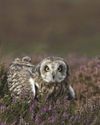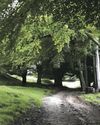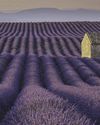
The plant was a sundew (Drosera rotundifolia – ‘Drosera’ from the Greek word droseros meaning ‘dewy’, from the appearance of glistening hairs on the leaves; ‘rotundifolia’ meaning round-leaved). Sundews have tentacles on their leaves with glandular heads that produce a sticky mucilage that reflects light and attracts insects. Once on the leaves the insects, stuck by the mucilage, struggle to escape, which results in them becoming more covered in the mucilage. In no more than ten seconds their struggles stimulate the plant’s tentacles to bend inwards and the leaves to curl up, trapping the insects which are suffocated. The whole process takes about three minutes. Enzymes are then produced by the plant from glands and the insects are eventually digested. So there you have it – grisly, unquestionable evidence of one genus of plants ‘feeling’ the dying struggles of their insect prey.
This story is from the October 2020 edition of Derbyshire Life.
Start your 7-day Magzter GOLD free trial to access thousands of curated premium stories, and 8,500+ magazines and newspapers.
Already a subscriber ? Sign In
This story is from the October 2020 edition of Derbyshire Life.
Start your 7-day Magzter GOLD free trial to access thousands of curated premium stories, and 8,500+ magazines and newspapers.
Already a subscriber? Sign In

Can Plants Hear?
In the latest in his series on the intelligence of plants, Martyn Baguley analyses whether they have the ability to hear

Peak National Park and Ride
Andrew Griffihs asks what the future holds for transport in the Peak National Park and talks to Julian Glover about his Landscapes Review

Doubly thankful
Mike Smith explores the village of Bradbourne, which has a particularly poignant tale to tell

What lies beneath
Exploring the hidden depths of Ladybower Reservoir, which conceals secrets of a fascinating past

Battle for our birds
Paul Hobson analyses our complex relationship with birds of prey and how these fascinating birds are fairing in Derbyshire

Explore the Peak Forest
A walk through autumn fields and forests with far reaching views enriched by snippets of mystery, romance and the area’s industrial past

Pictures to transport you
Chesterfield photographer David Keep continues his photographic journey, this time recalling his favourite landscape images from around the world

The magic of Christmas
Ideas for days out, gifts and where to find local produce in Derbyshire this festive season

PENNY for the Guy
We take a look at Derbyshire’s bonfire tradtions through history

From hardship came happiness
Pat Ashworth speaks with Chesterfield based retired Colonel John Doody about his inspiring life, from a diffiult childhood to overcoming diversity and finding happiness